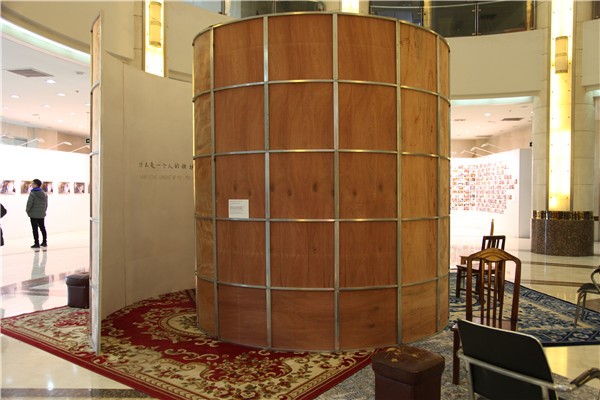Art Newspaper | China
German translation
A Tour of Spiritual Territory: “Map and Territory” International Art invitational Exhibition
- Dezember 2018, 14:24 Cao Keyuan
http://www.zgmsbweb.com/Mobile/Index/articleDetail/post_id/18294?from=timeline
(Übersetzung des Text-Ausschnittes, der meine Installation PERSONAL TERRITORY betrifft)
Künstler sind die akute Antenne des Zeitalters. Die chinesische Künstlerin und Kuratorin Li Xinmo sowie der deutsche Künstler und künstlerische Leiter Roland von der Emden haben die internationale Kunstausstellung “Map and Territory” an der Beijing Geely University geplant. Die beiden Kuratoren haben Künstler aus verschiedenen Ländern mit unterschiedlichen Identitäten, Nationalitäten und kulturellen Hintergründen eingeladen, um dieses Thema zu diskutieren. Ihre Arbeiten befassen sich mit Installationen, Fotografie, Videos, Malerei und Performance. Daraus geht hervor, dass die Kuratoren versuchen, die “schwer zu durchquerende, spirituelle Karte” mithilfe von Kunst und durch Kunst zu betreten.

Die Ausstellung befindet sich in der Bibliothek der Beijing Geely University. Beim Betreten des Bibliotheksgebäudes steht eine hohe und offene Spiralkonstruktion eindrucksvoll in der Mitte der Halle. Dies ist die Installationsarbeit “Personal Territory” der Schweizer Künstlerin Franziska Greber. Das Publikum kann die Installation betreten. Während des Einstiegs in die Installation kann das Publikum nacheinander die auf die Wand des Installationskörpers geschriebenen Fragen sehen: Was ist der Inhalt meines persönlichen Territoriums? Was möchte ich hinzufügen? Was fürchte ich zu verlieren? Je tiefer sie gehen, desto dunkler wird das Licht, desto tiefer wird die Frage an der Wand angezeigt. Dies ist eine Metapher, um nach innen zum Herzen zu gehen. Die Frage nach dem persönlichen Territorium führt dazu, über sich selber, das Verlangen und die Angst nachzudenken, und die Angst ist oft am tiefsten Ort verborgen – tief im Menschen. Die Teppiche unter der Spirale, die sich aus der Spirale mit den Stühlen im Aussenbereich erstrecken, weisen auf die Verbindung von innen und aussen des eigenen Territoriums und die Kommunikation mit anderen hin. Mit Hilfe einer selbstbefragenden psychologischen Analyse untersucht die Autorin die Grenzen des persönlichen Territoriums und seiner inneren Ursachen sowie die Möglichkeit der Kommunikation zwischen persönlichem Territorium und anderen. Die Künstlerin berührt ein wesentliches Problem des persönlichen Territoriums: Angst vor Fremden ist oft einer der Gründe, persönliche Barrieren gegen die Aussenwelt zu errichten.
Angst sucht Sicherheit, baut Barrieren auf, widersteht Veränderungen, daher wiederholt sich das Leben monoton und verhindert ein unvorhersehbares, neues Leben. Angst drängt uns in unsere Grenzen, egal ob es Glück oder Traurigkeit gibt, es ist ein sicherer Ort, denn er wurde von uns erlebt und macht uns blind für die Realität, der wir gegenüberstehen. Wir halten uns an die “sichere” Vergangenheit, um die Annäherung an die Gegenwart zu vermeiden, und verzögern den Ablauf der Zeit. Morgen wird jedoch kommen und korrigieren, was wir gesehen haben. Daher ist es nicht das Verlangen, sondern der Mut, der es uns erlaubt, den Dingen zu begegnen, die fremd sind und uns überraschen, und unsere Existenz weiter tragen. Das Verlangen ist ein ausschliesslicher, selbstzentrierter, in sich geschlossener Zweck, der die Vielfalt der Existenz genau einschränkt.
……
